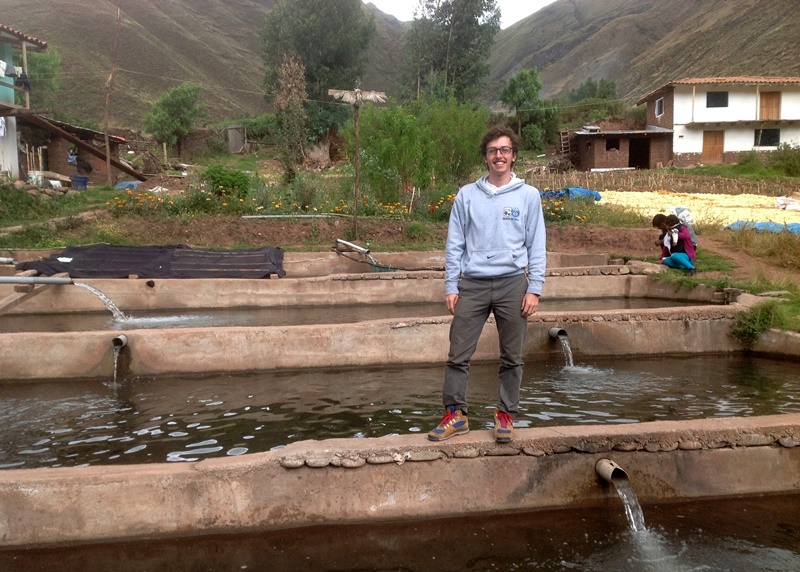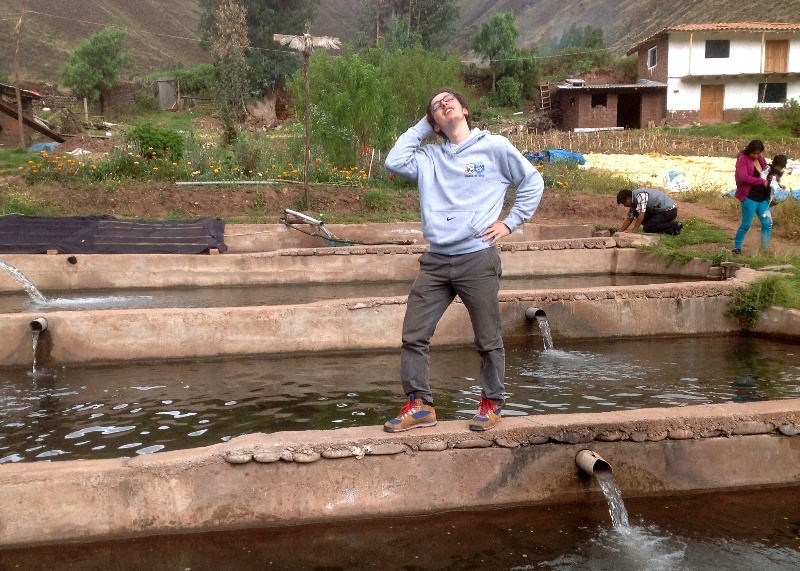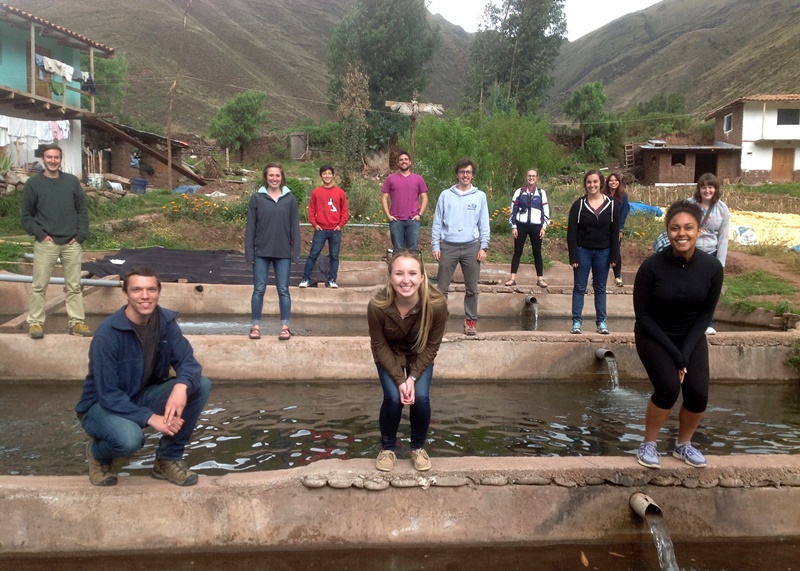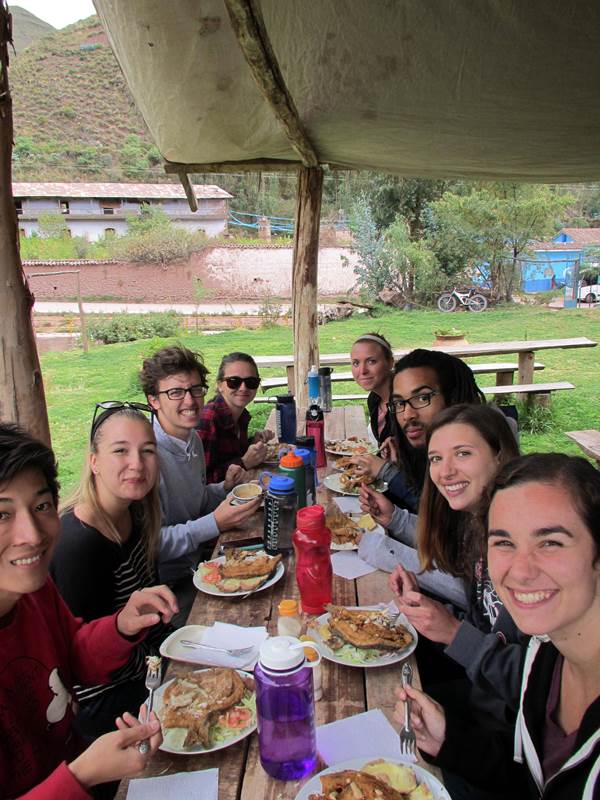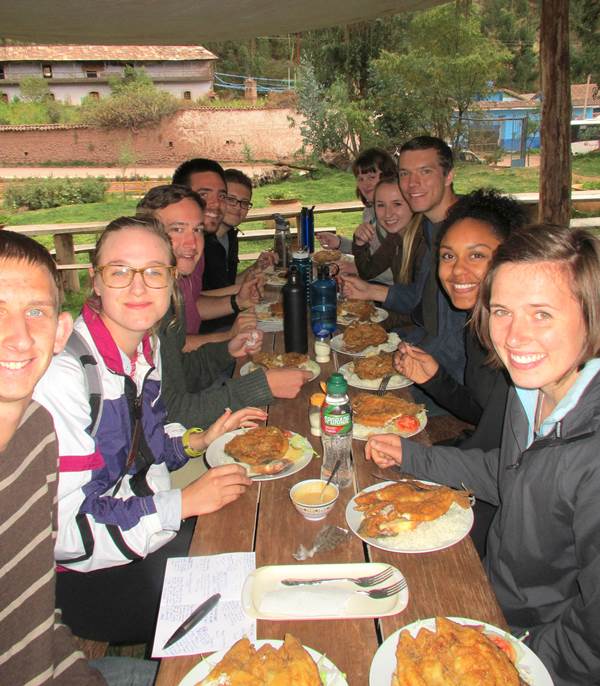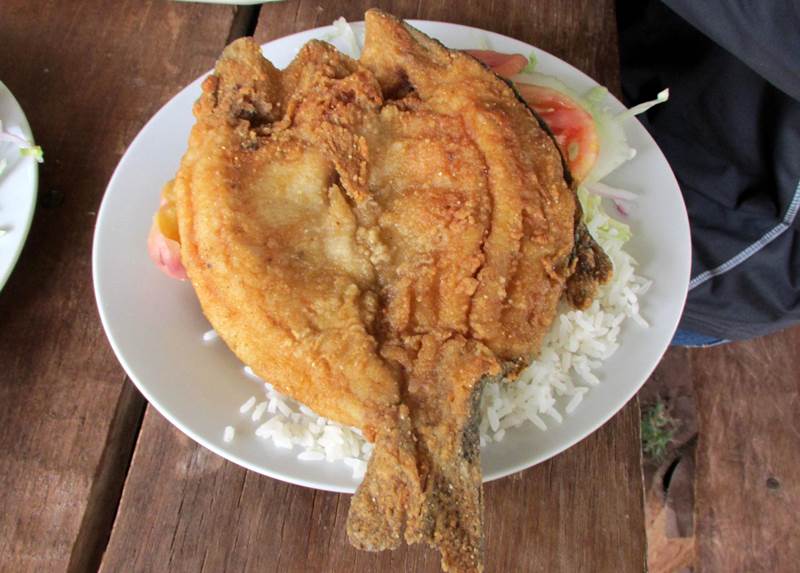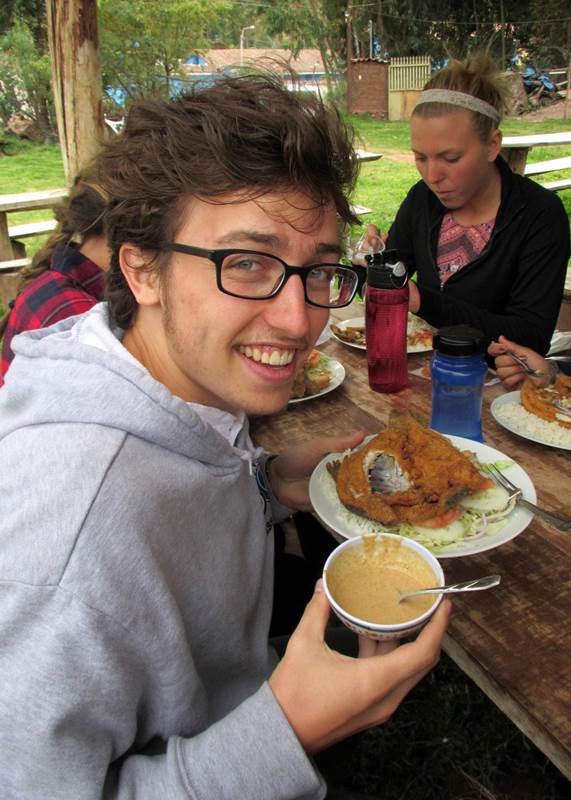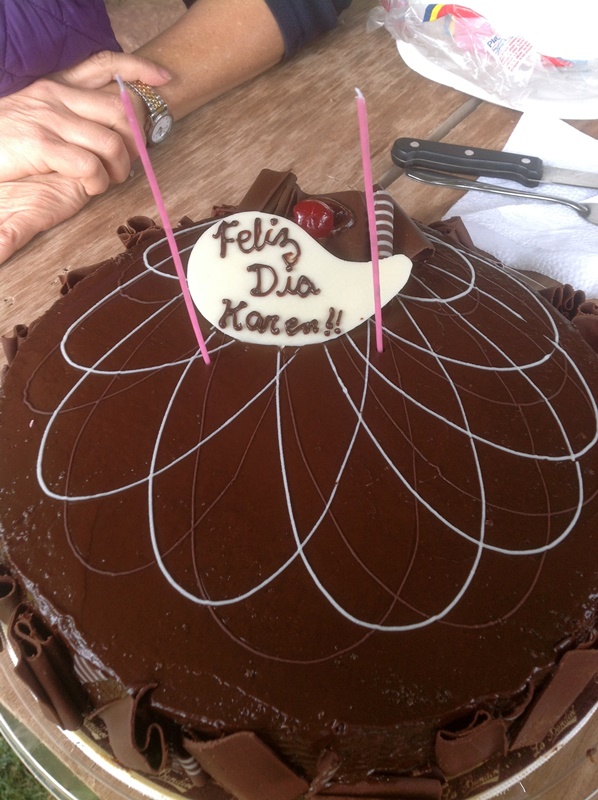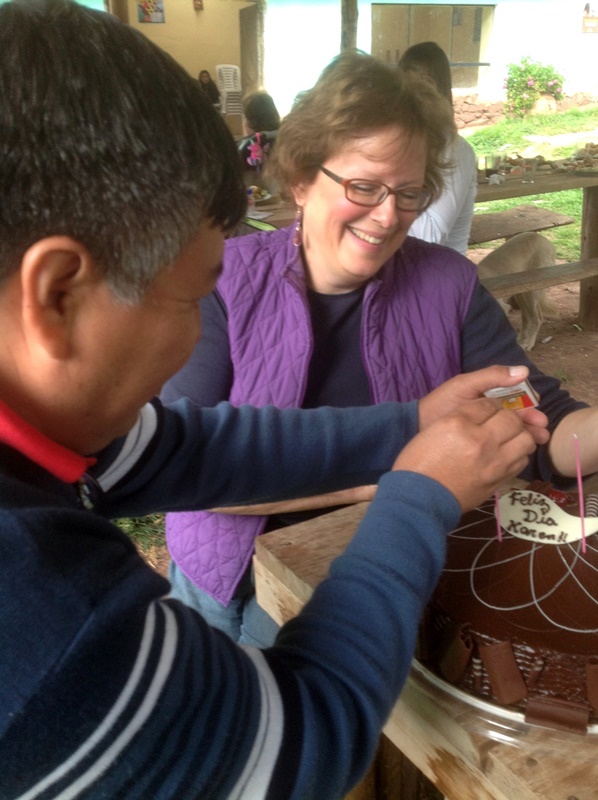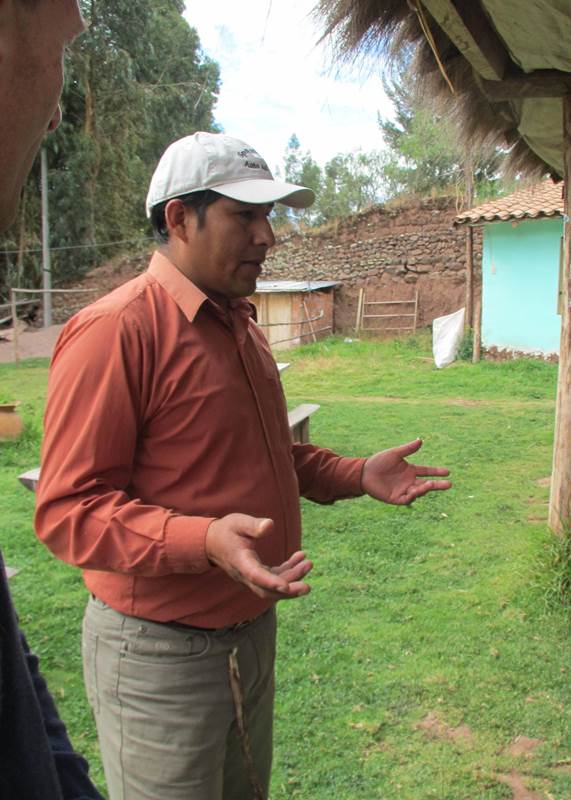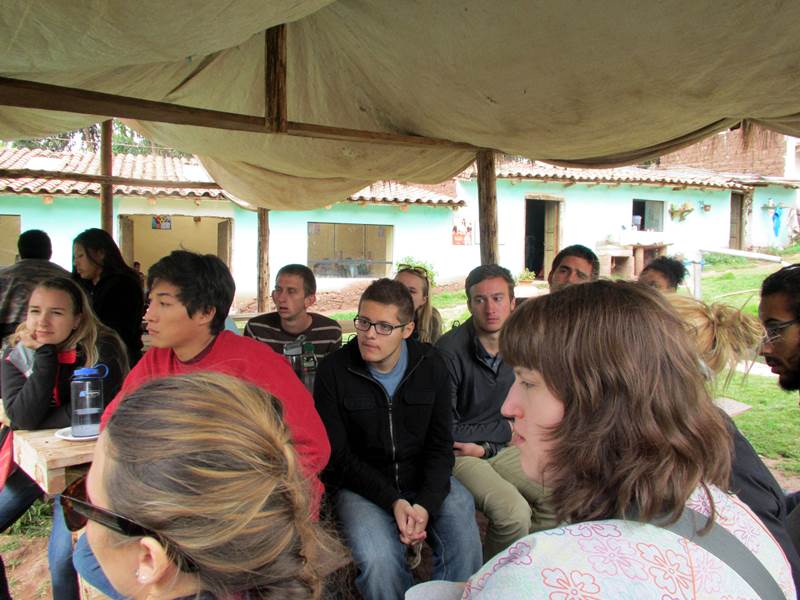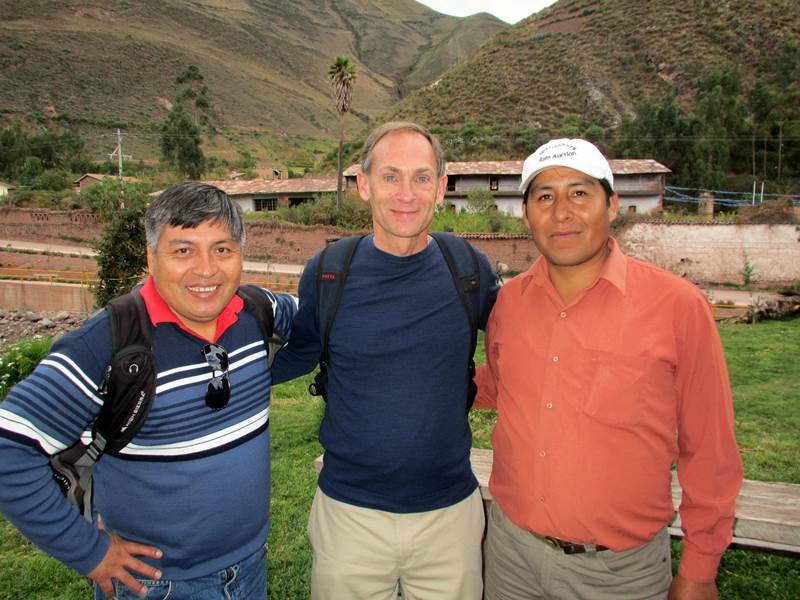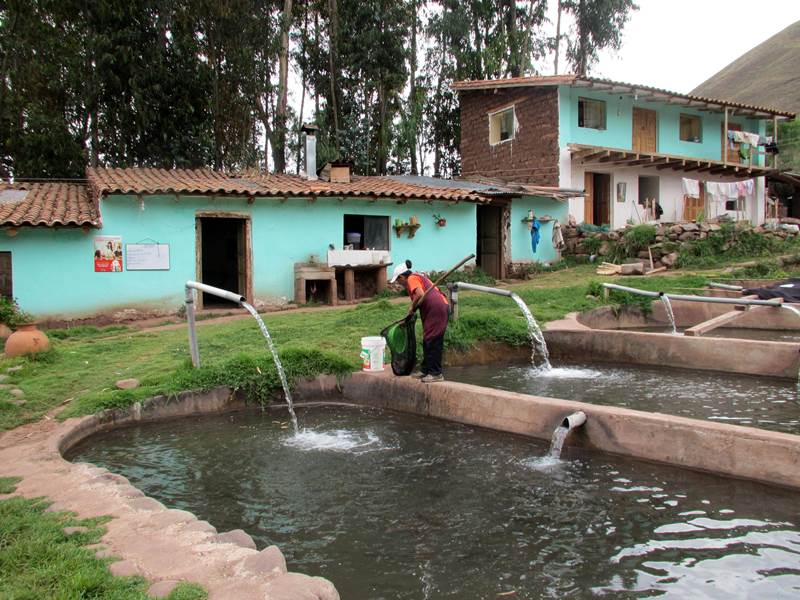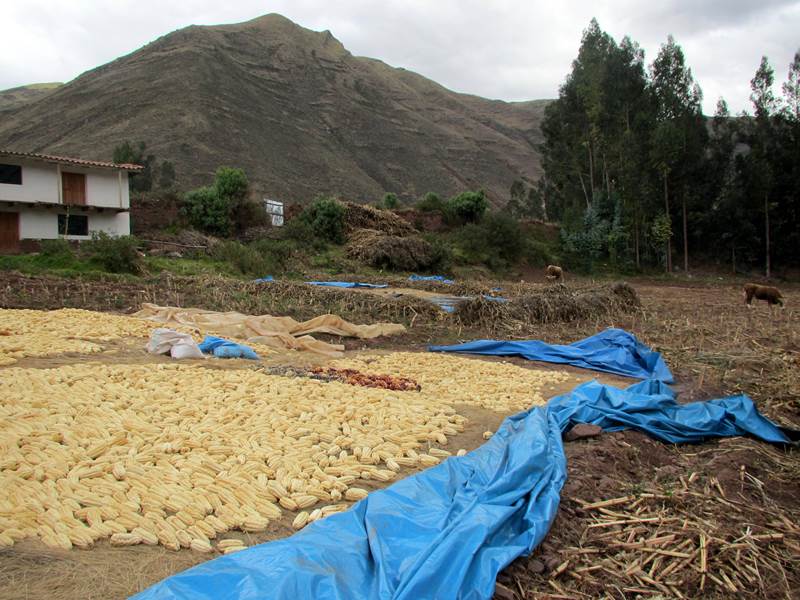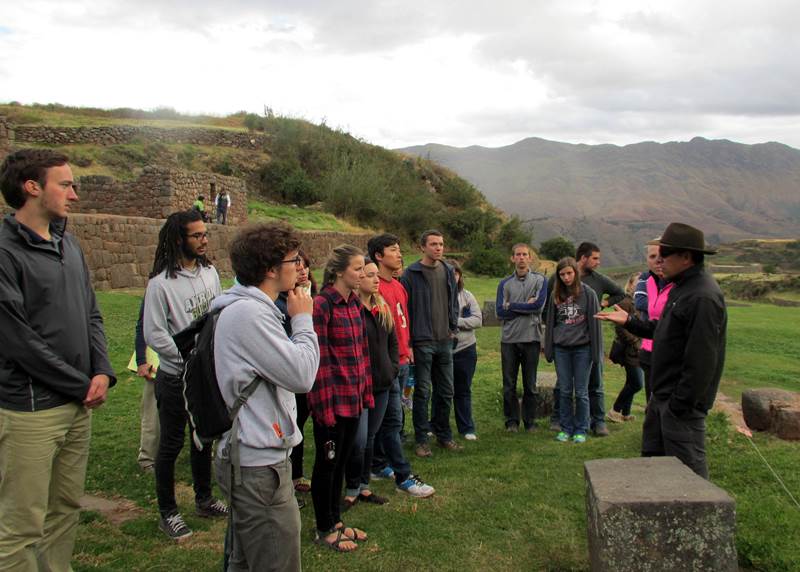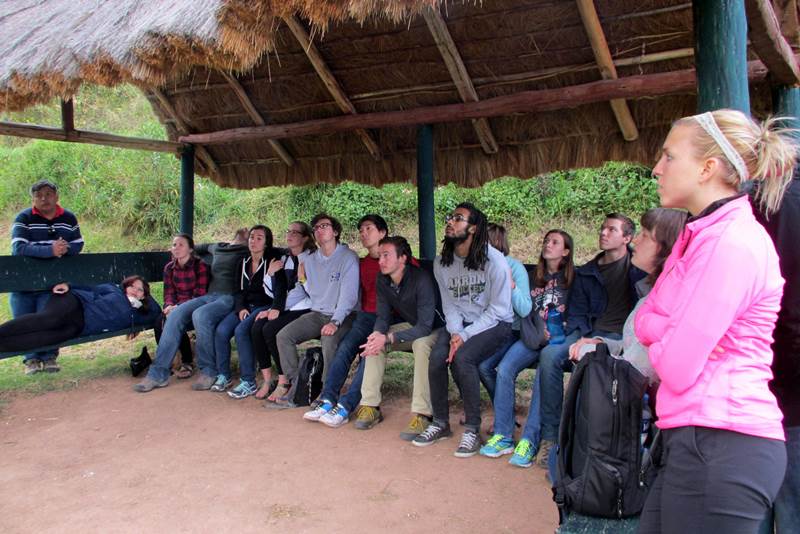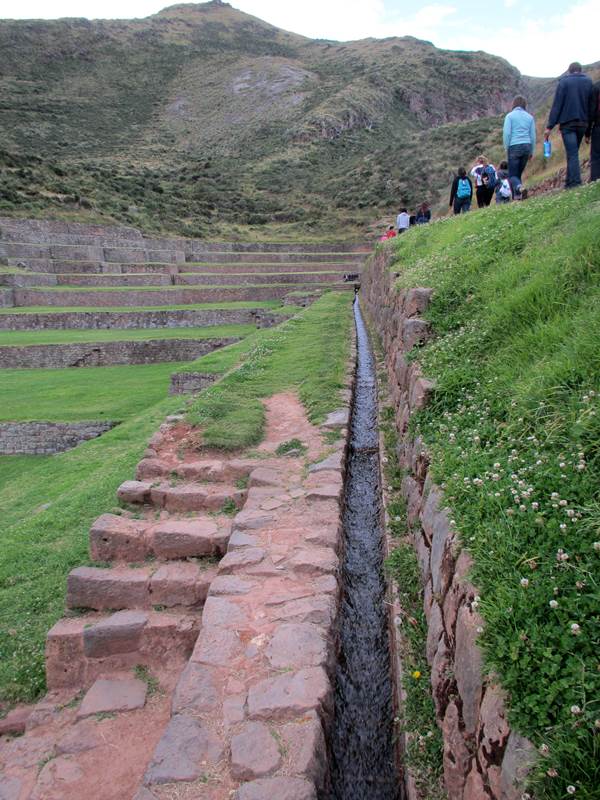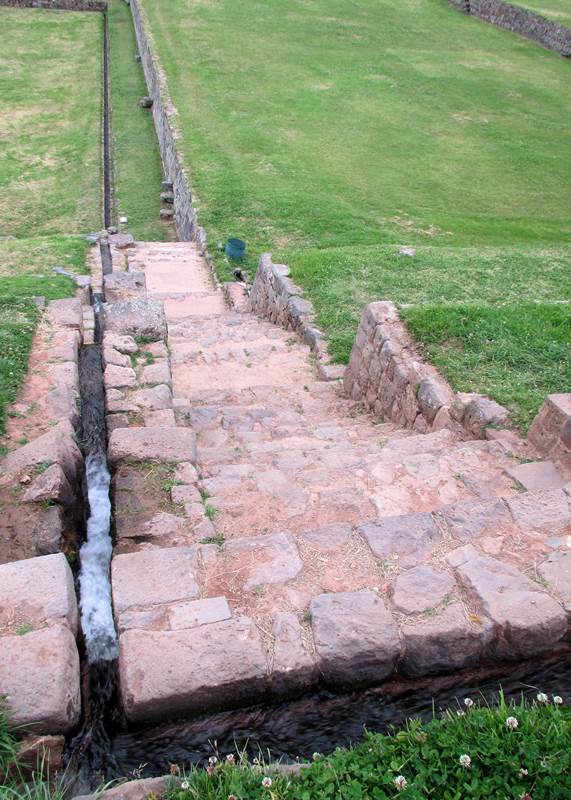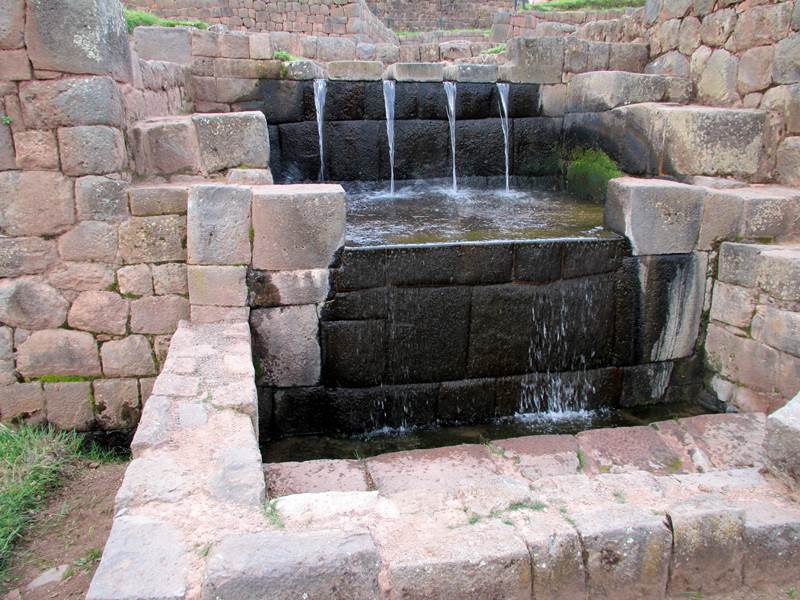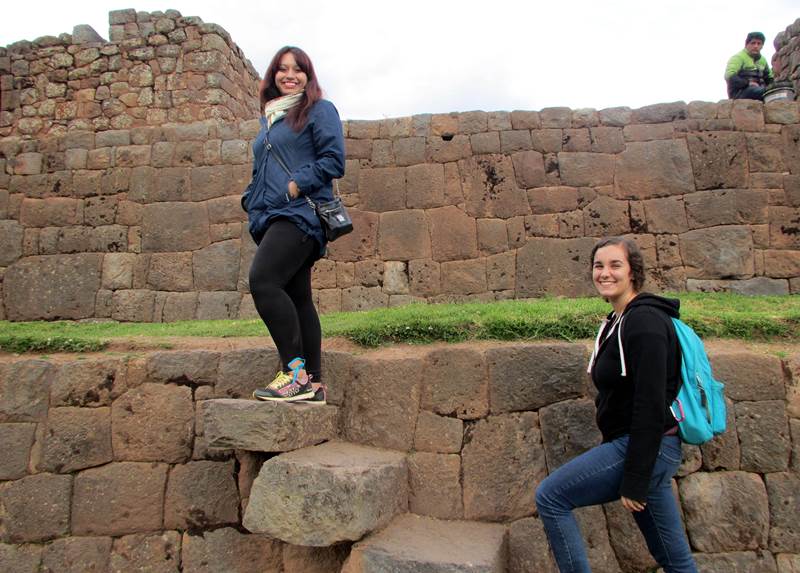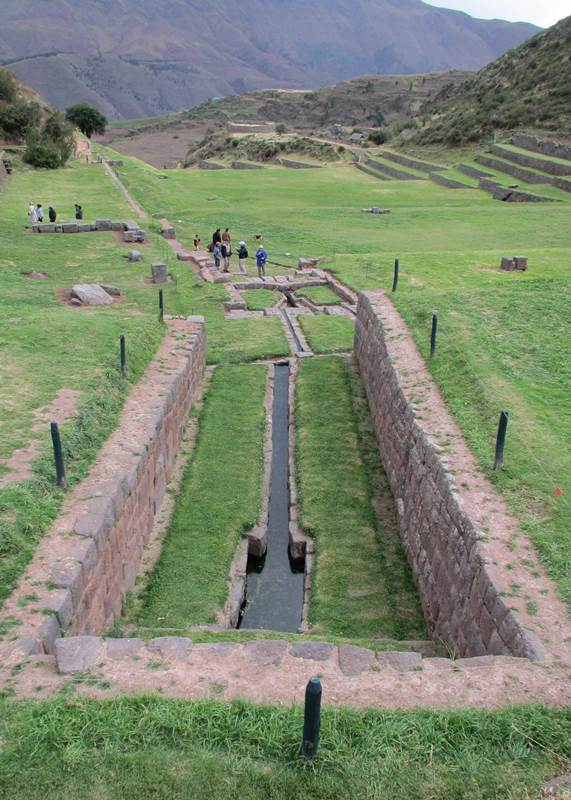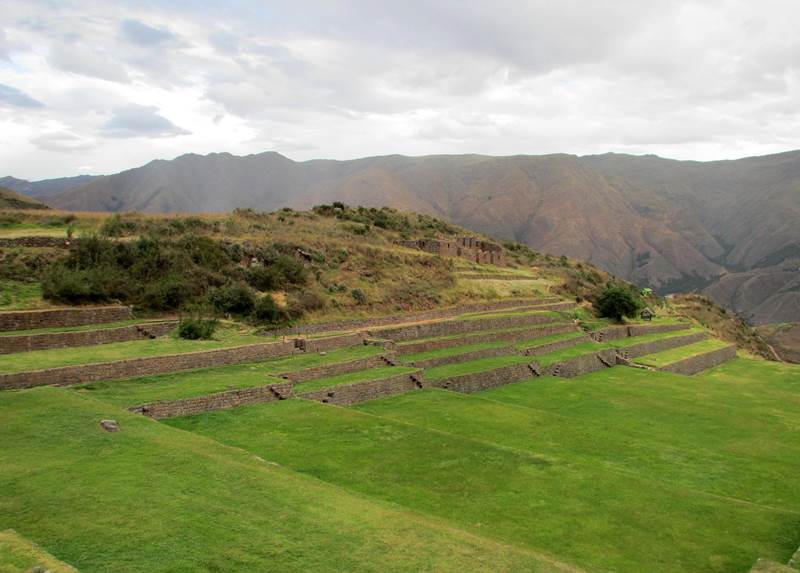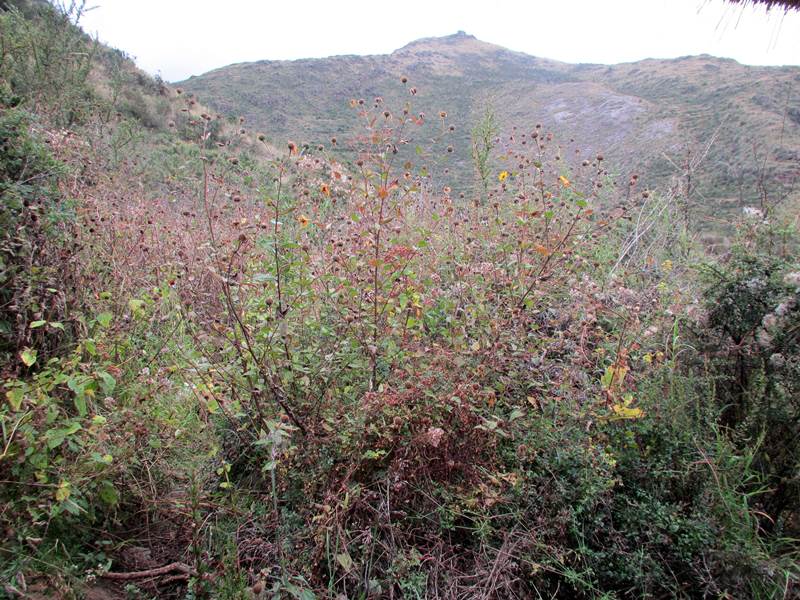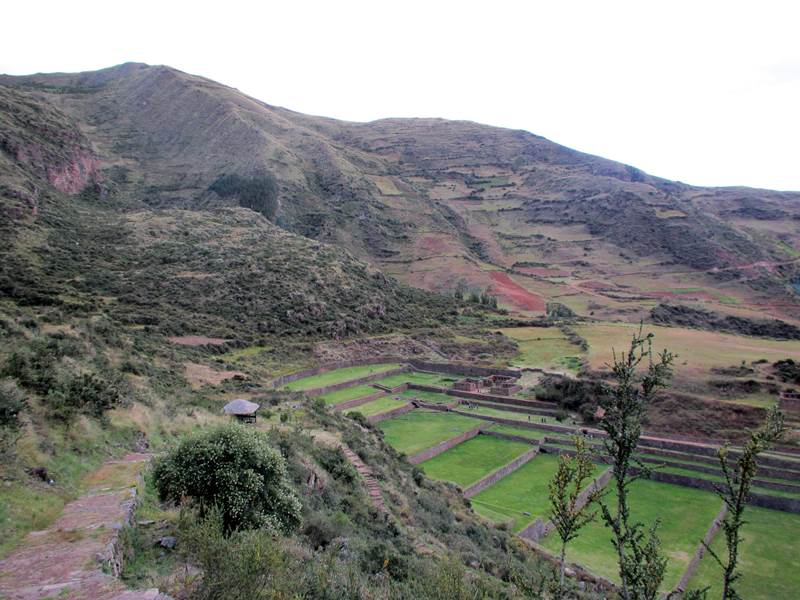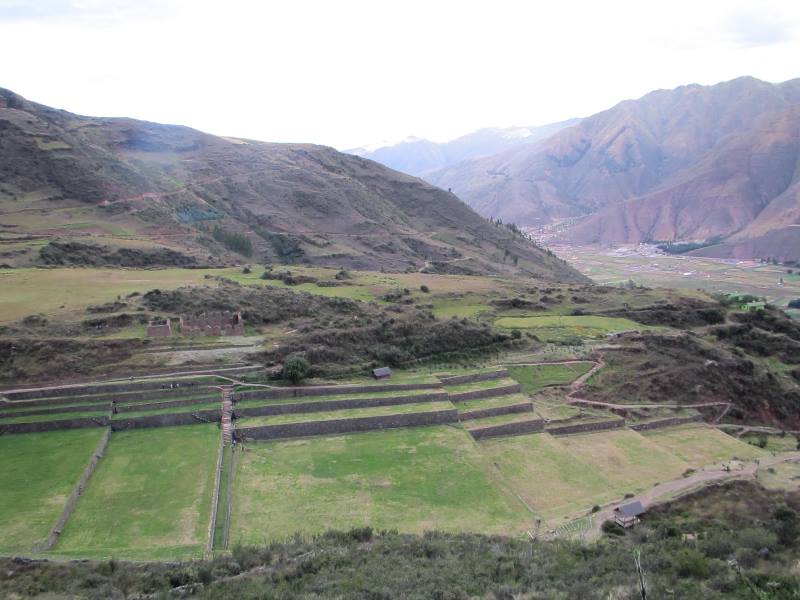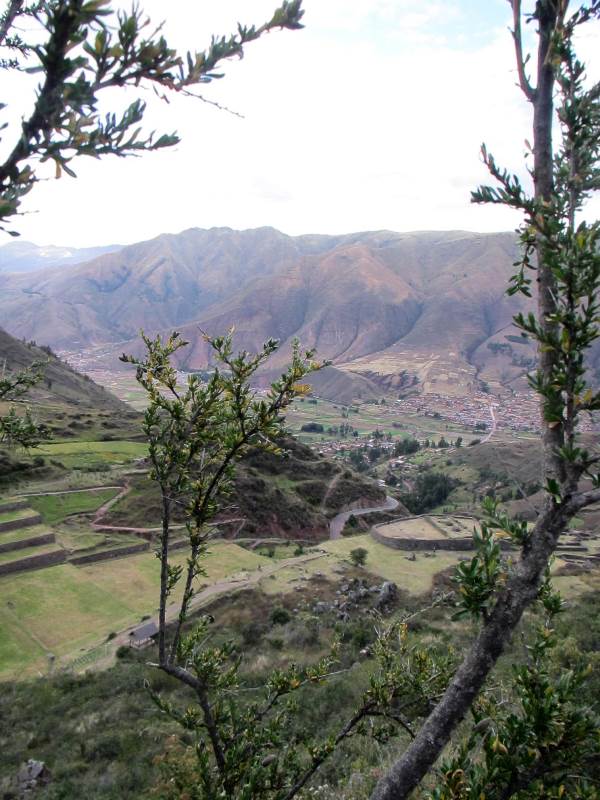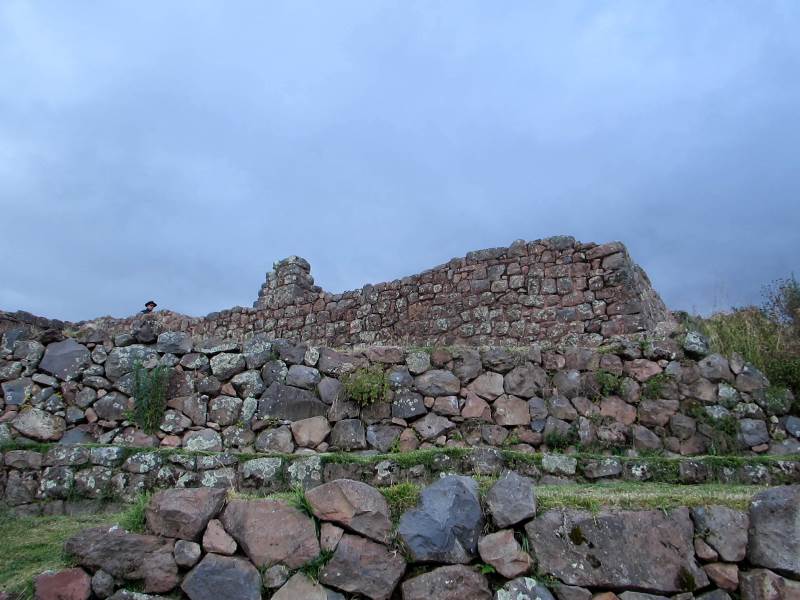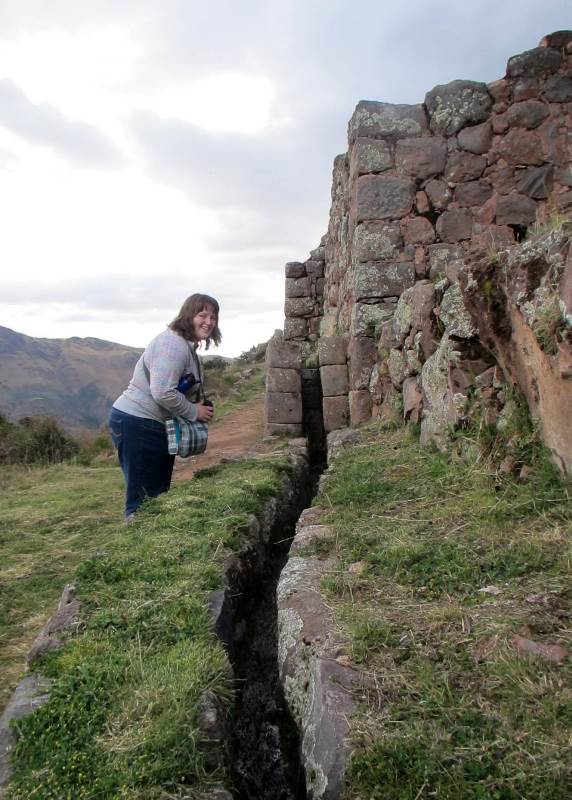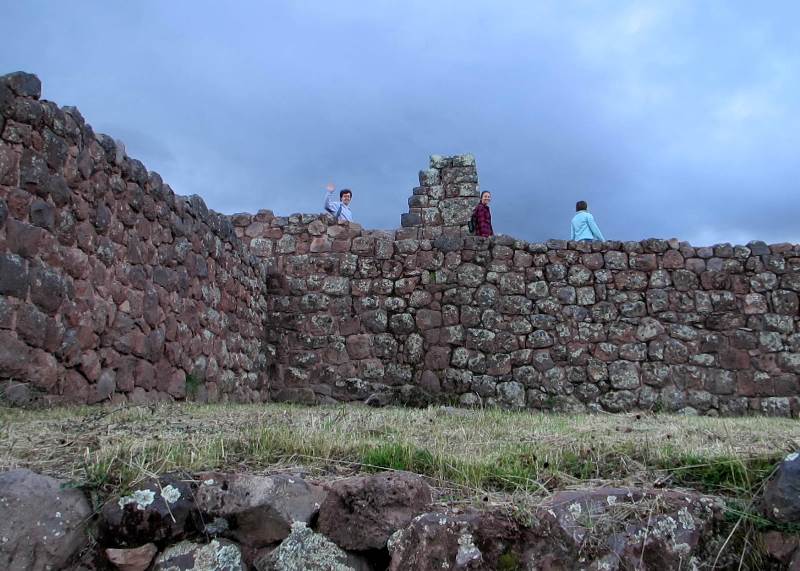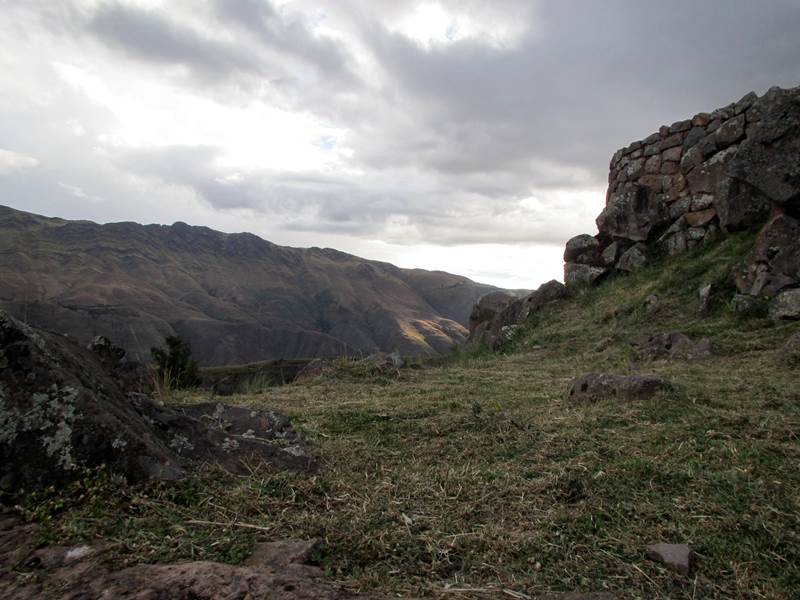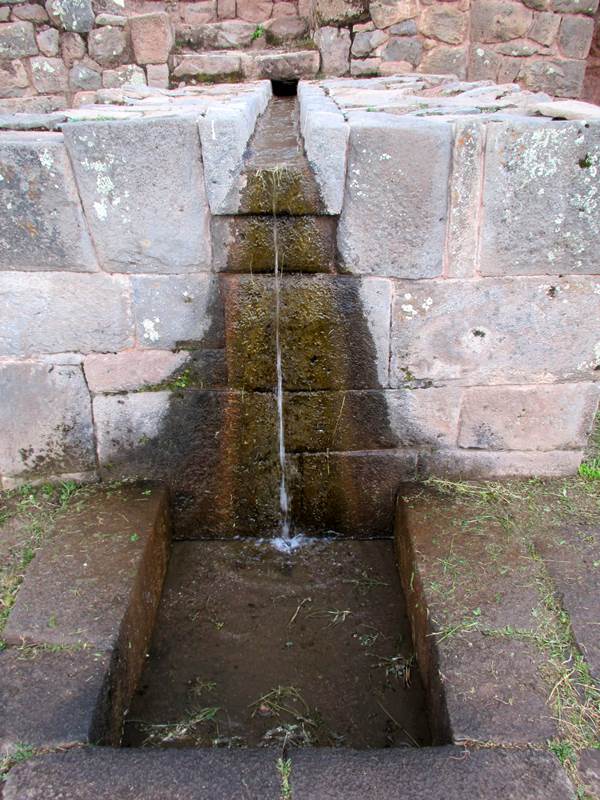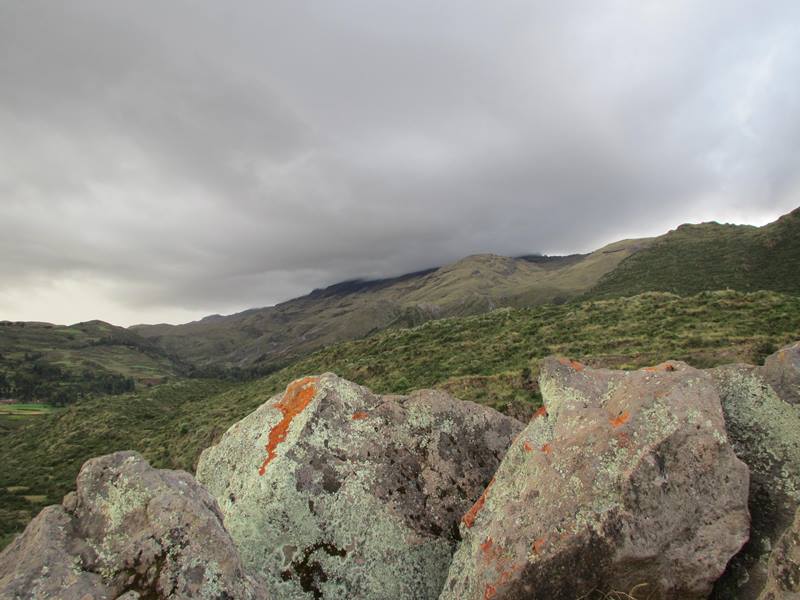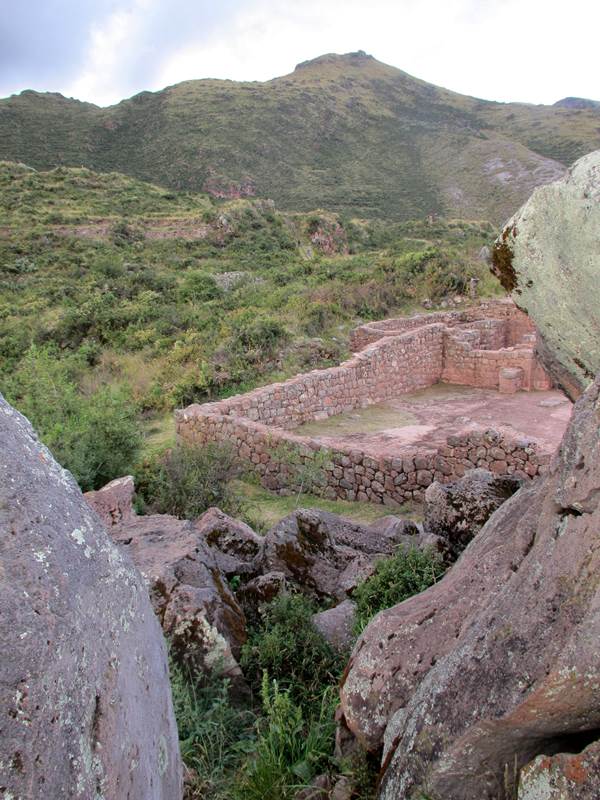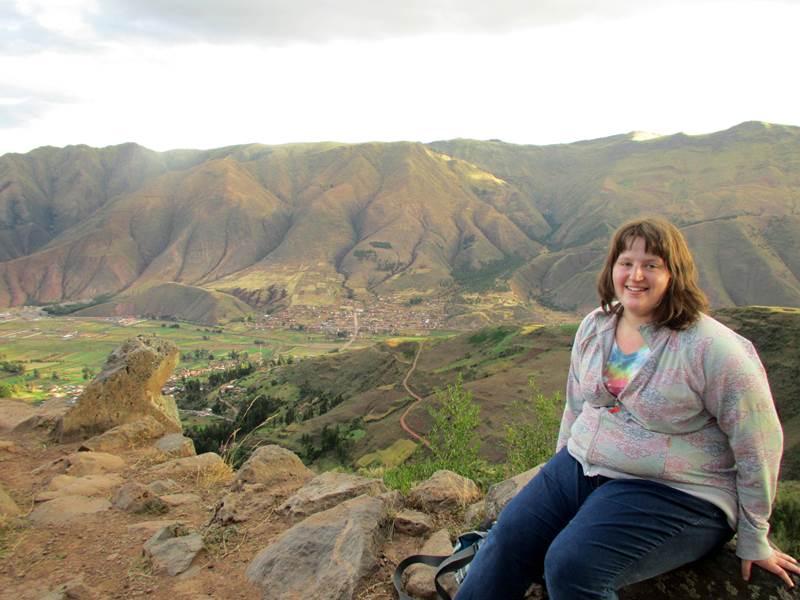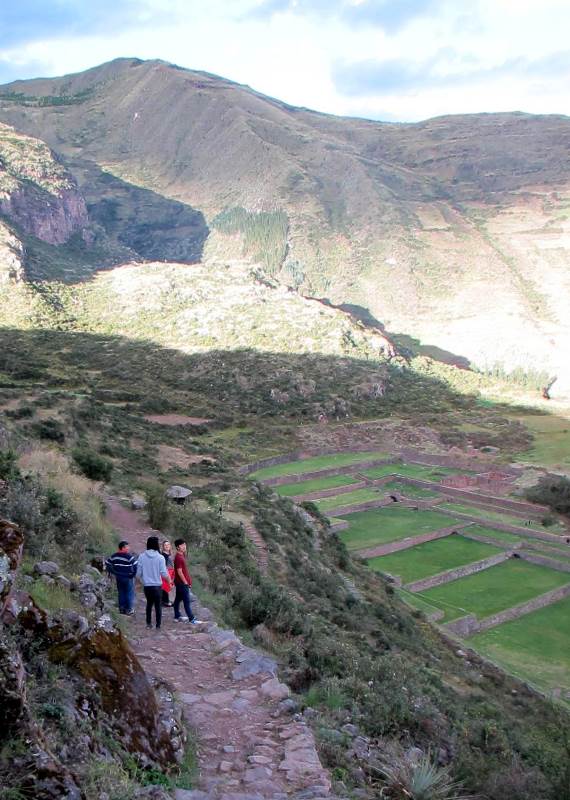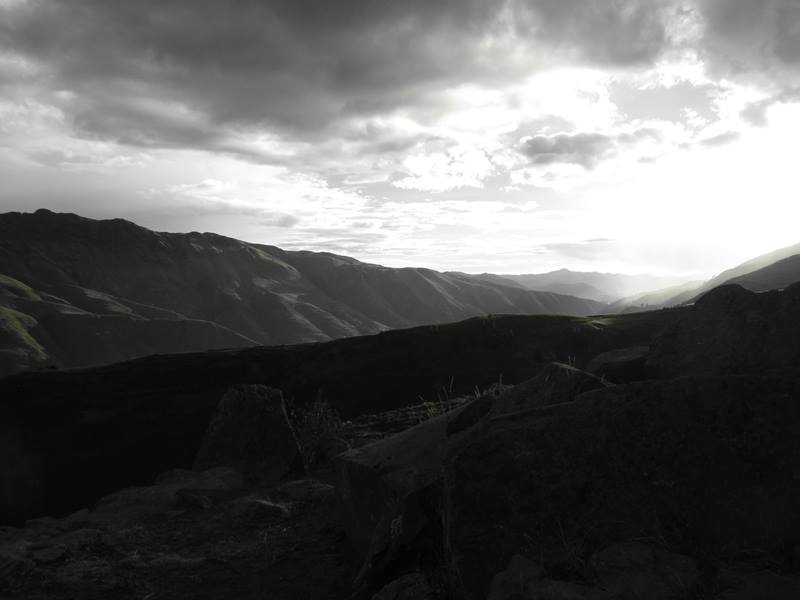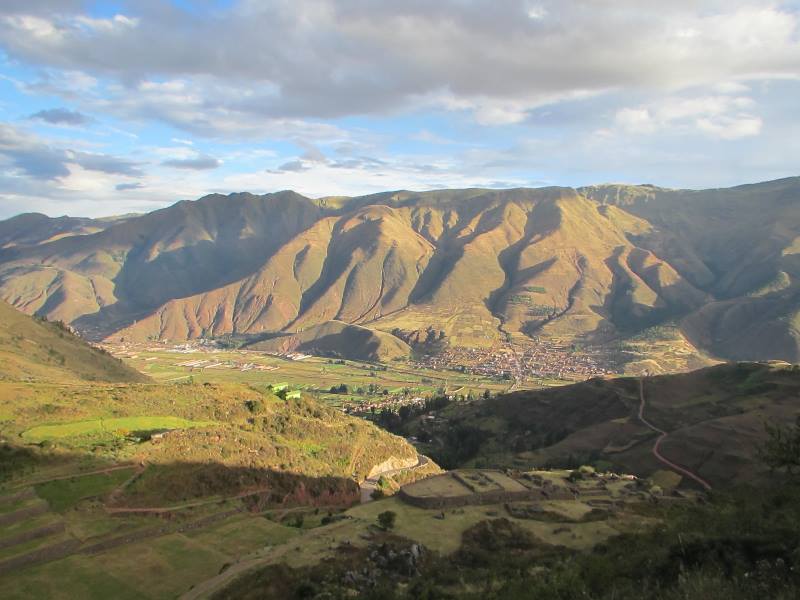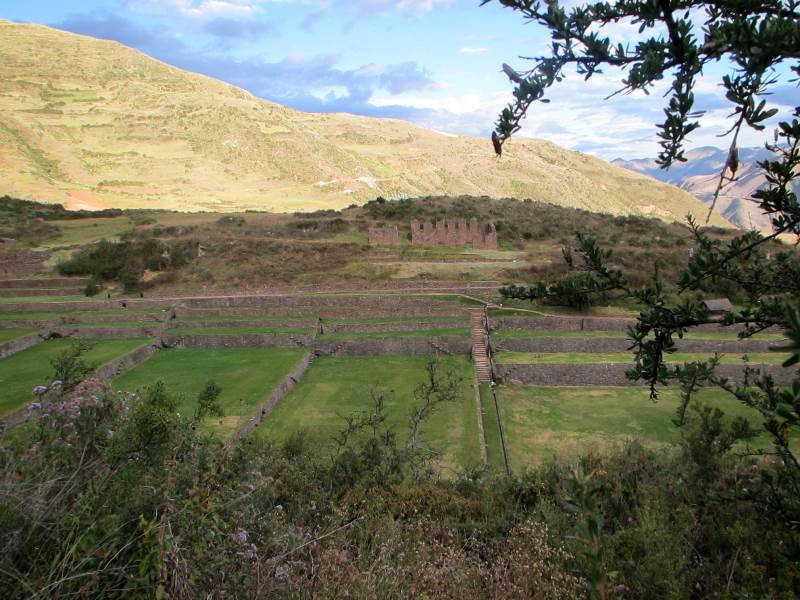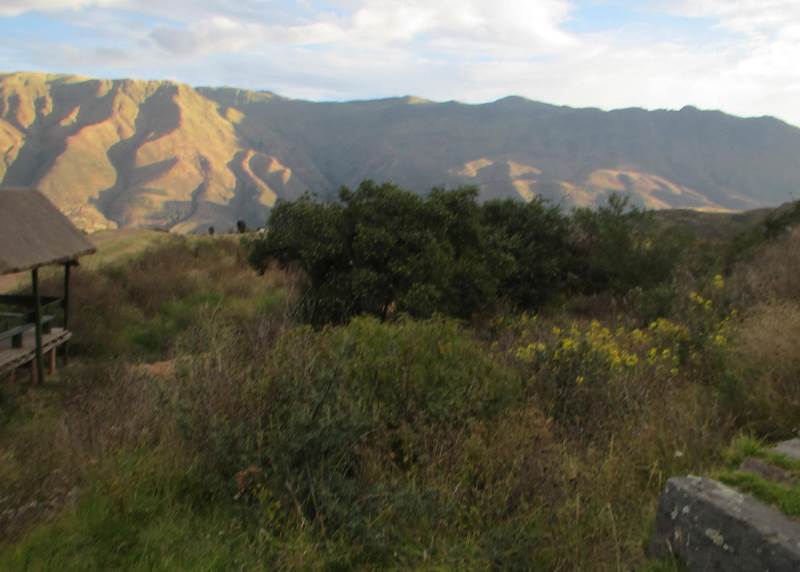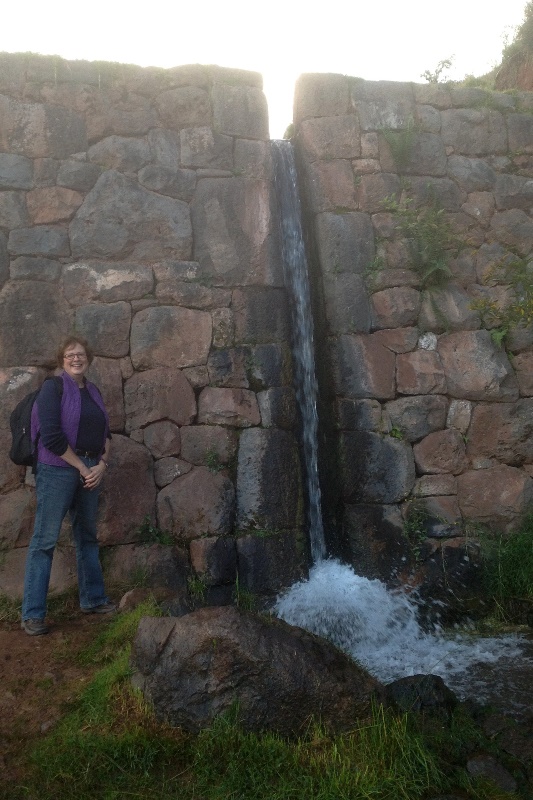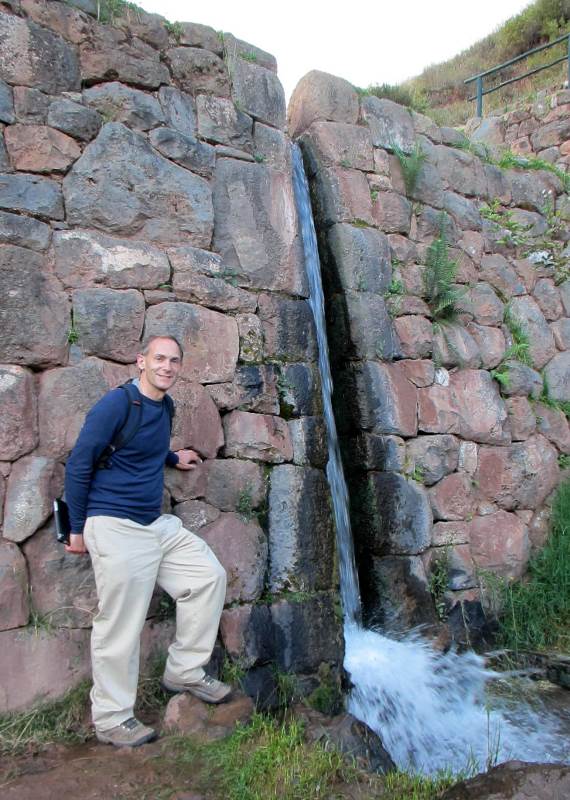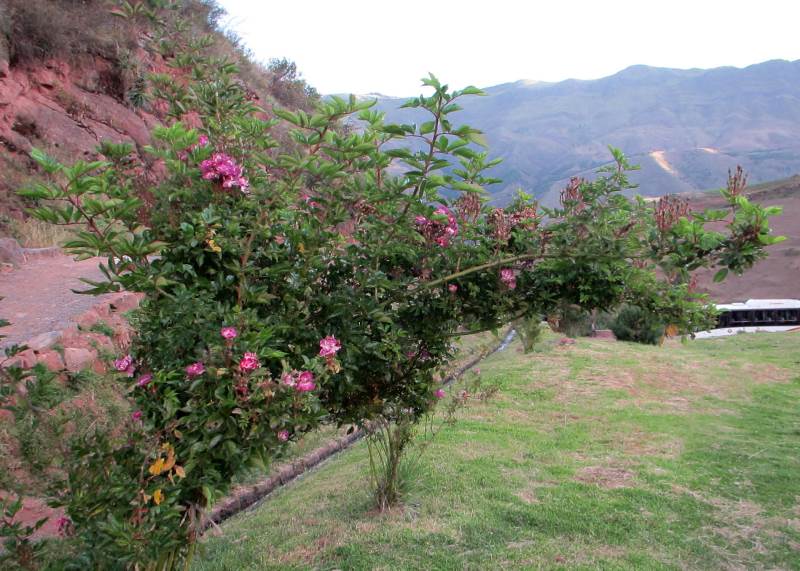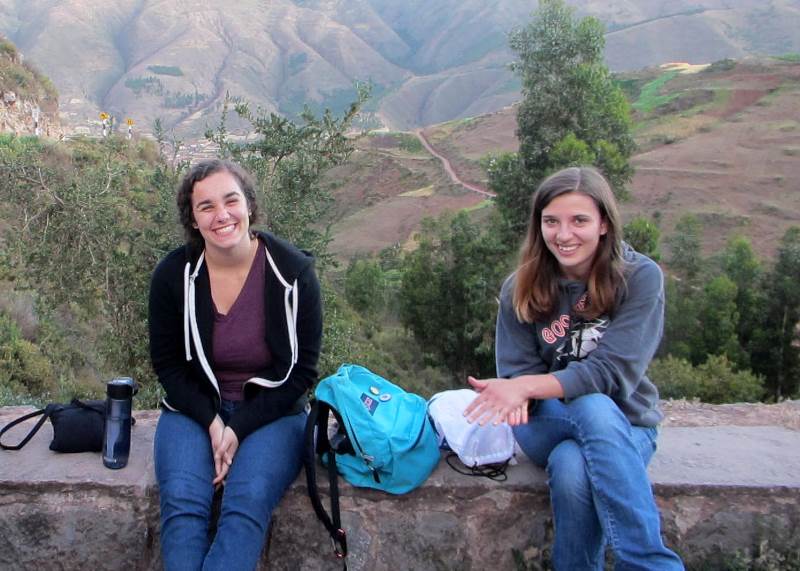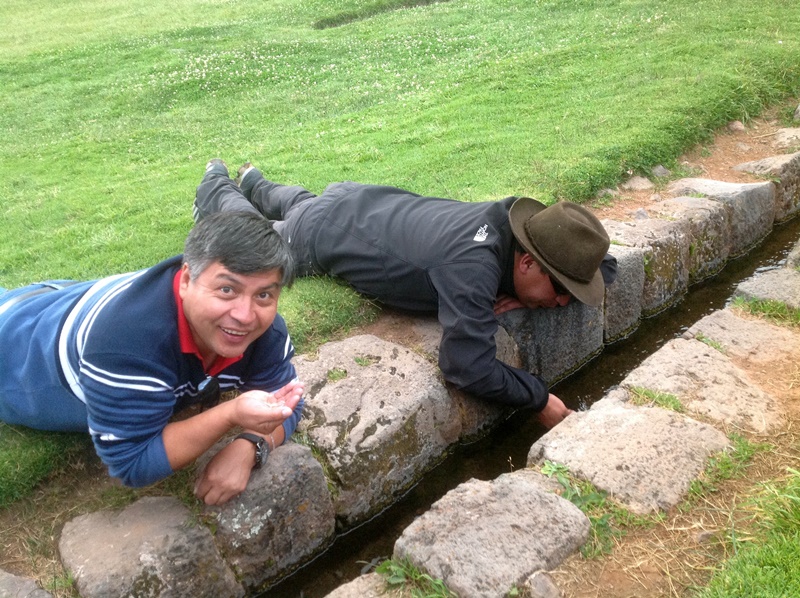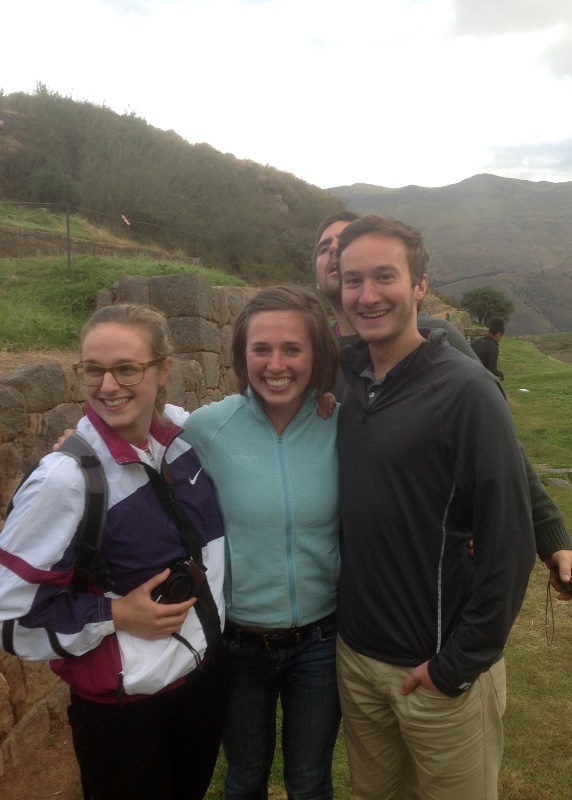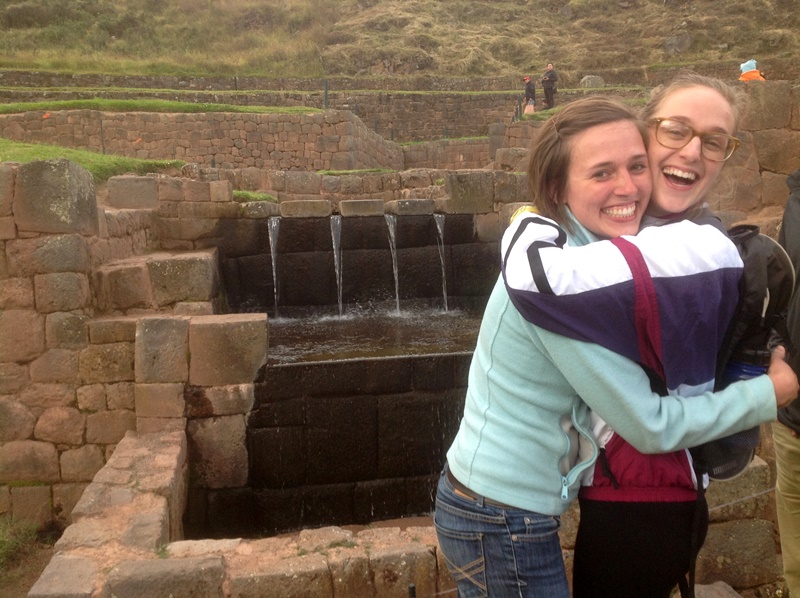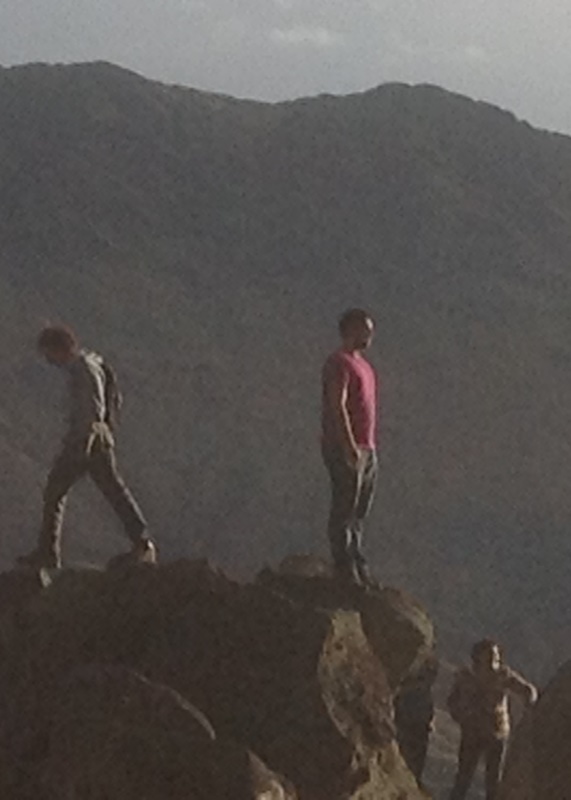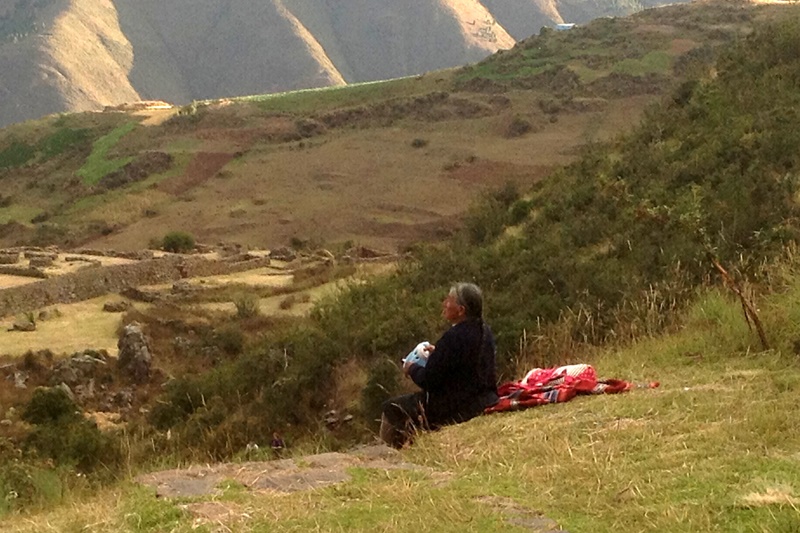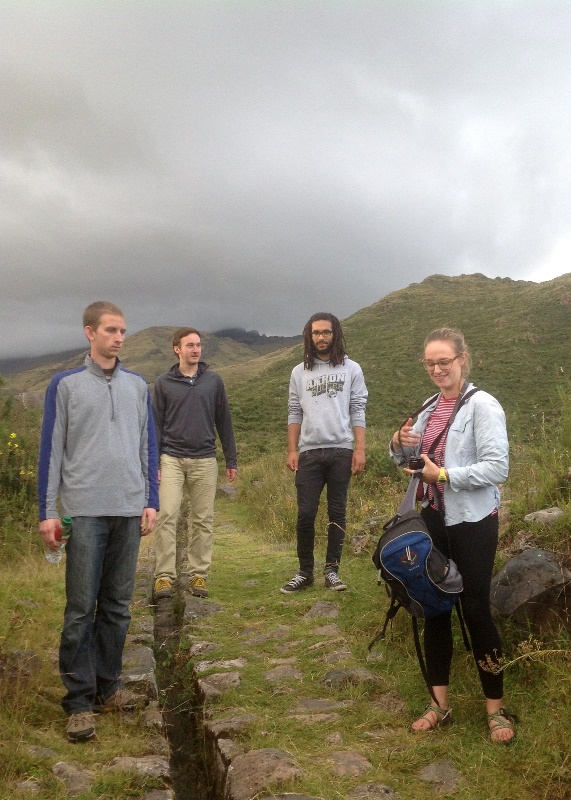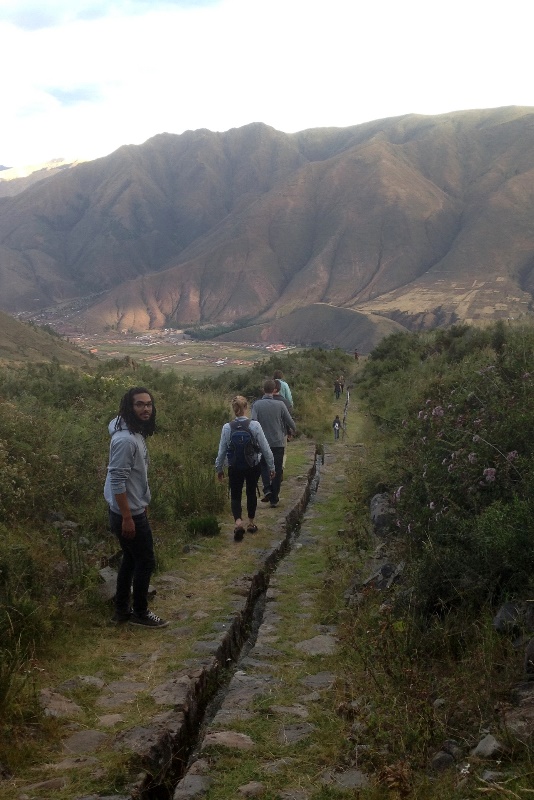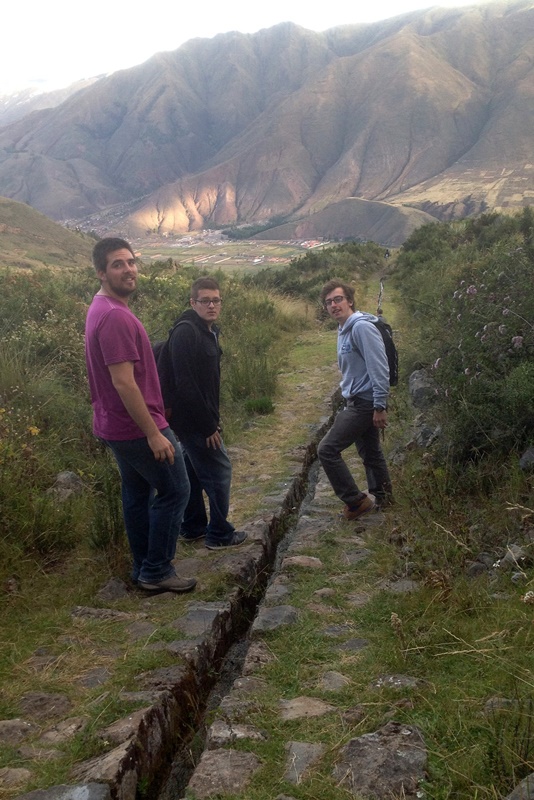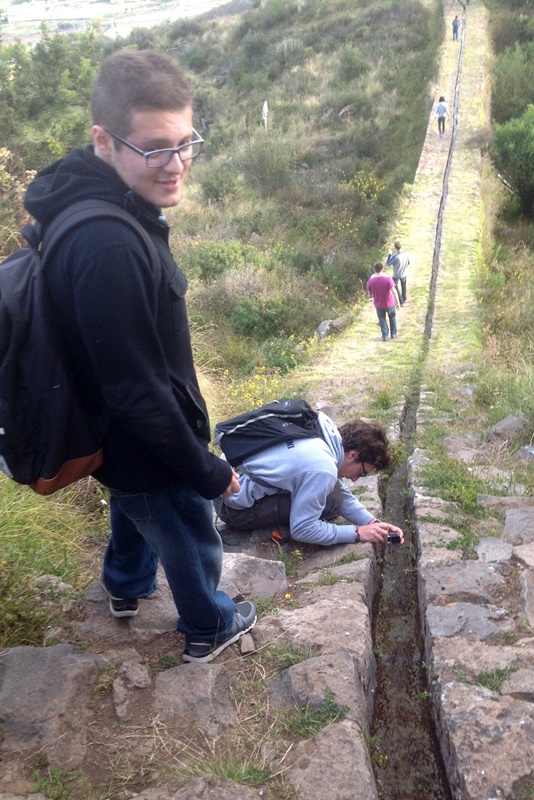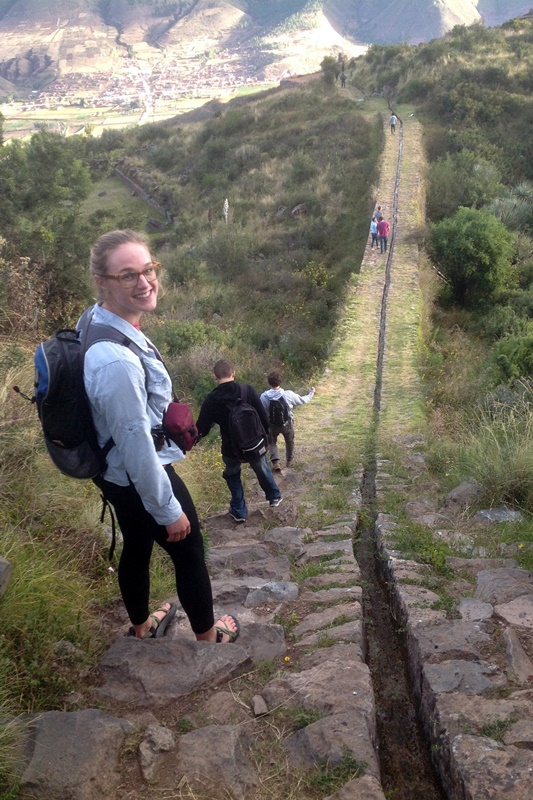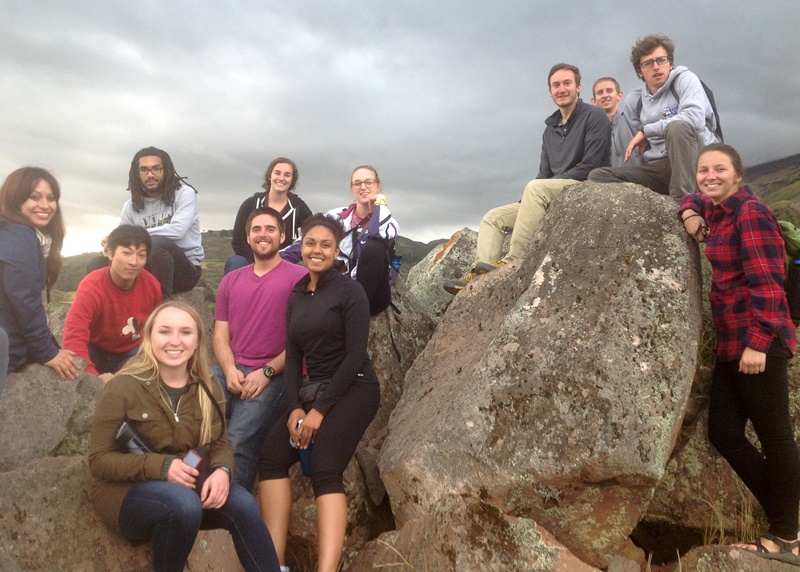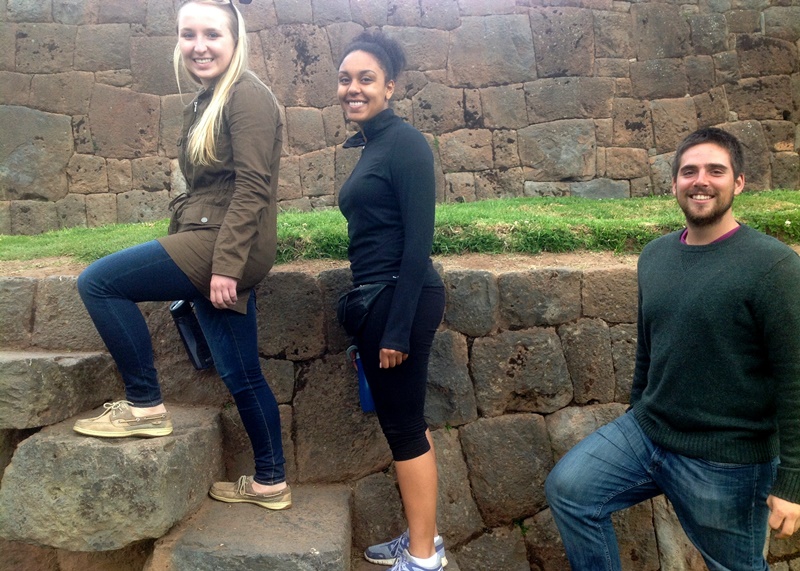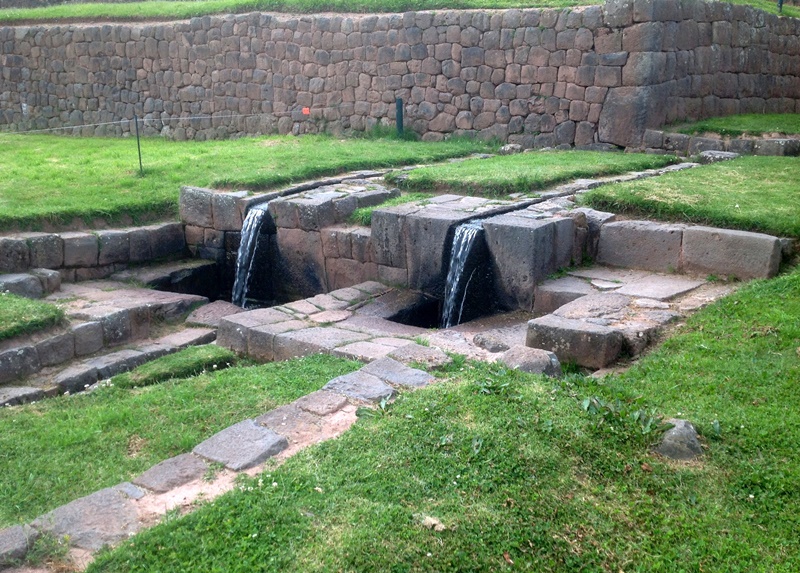Touring the Waterworks of Tipón After Dining on Trout
By Karen and Duane Sherer Stoltzfus
Peru SST Co-Directors, 2014-2015
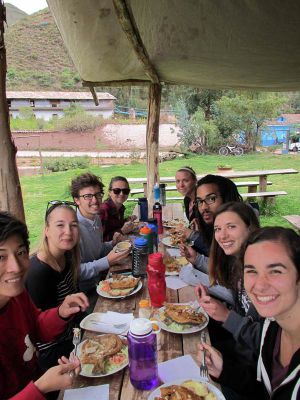
For our students in Lucre and Huacarpay, Sunday morning began the traditional way, at daybreak. There were hikes up the mountain, walks to see family cornfields, demonstrations in how to catch and prepare trout for breakfast.
Students joined their host families in attending the small Mennonite churches in Lucre and Huacarpay, where Quechua blends with Spanish and the music is enhanced by lively praise bands.
The first Mennonite church in Peru, La Iglesia Evangelica Menonita de Lucre (Lucre Mennonite Evangelical Church), was founded in this small mountain town of a few thousand people in 1990.
We traveled together on Sunday afternoon for lunch at a trout farm owned by the pastor of that church, Eloy Sullca Bombilla, and his family. Pastor Eloy shared something of the history of the church and farm after the meal. He is one of four pastors from the Cusco region who will be traveling to Pennsylvania in July, their first time in the United States, to attend Mennonite World Conference.
Lunch consisted of fresh trout, corn known as choclo, potatoes, rice and salsa de mani (a spicy peanut salsa). Our visit fell on Karen’s birthday, and so we celebrated with a chocolate cake from a bakery in Cusco.
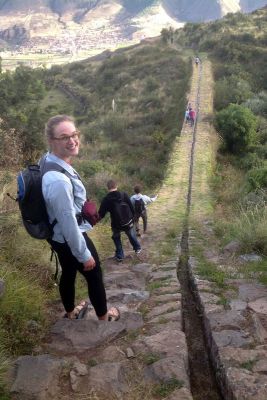
We were delightfully surprised to run into friends at the trout farm restaurant, Chris and Rose Raber and their four daughters. They live in nearby San Jeronimo, attending the Mennonite church there and supporting various ministries, including Promesa, a primary and secondary school. They, in turn, introduced us to Dr. Will Caire and his family, who are providing medical ministry in Curahuasi, a new service location for us, as of this semester.
The afternoon was spent climbing at nearby Tipón, a marvel of Inca waterworks. A series of canals provide fresh water to what was once a private estate of the Incan leader Pachacutec, looping across a series of terraces.
The Incas corralled the water for both personal use and irrigation, finding ways to incorporate striking lines of stone into the natural landscape. The site also served as an agricultural experimental station for growing corn, beans, quinoa and potatoes at varying elevations.
We appeared to be the only North Americans there, enjoying the site with local Peruvians for whom Tipón is a popular Sunday outing. As we were leaving Tipón late in the afternoon, a rainbow appeared over the waterworks, stretching from mountain peak to mountain peak.
